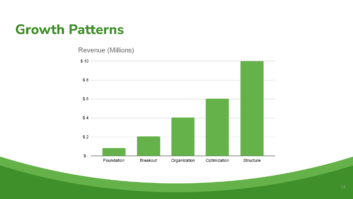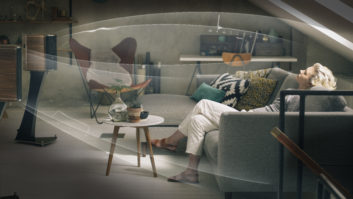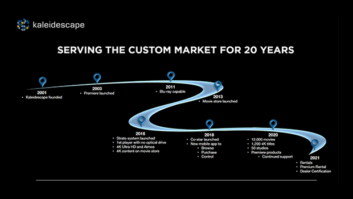Everyone wants to upgrade. The Ford owner may want to get a Cadillac (if he’s an “American-made” guy) or a BMW. And our clients also want to upgrade – maybe from an older pre-HDMI plasma TV to a new model so they can watch Netflix in the living room. Or perhaps to touchscreen control or to music in more rooms.
Upgrading our client’s equipment is what keeps us busy between whole-home projects. Upgrading our business is also key.
I’ve talked a lot about instilling processes, training, and the like; now I want to talk about upgrading our game to higher-end products, better margins, and more reliable products that make our clients’ lives better and reduce our truck rolls and headaches. Several years ago I made the strategic decision to become dedicated to the Crestron line, keeping as much hardware as possible under one brand umbrella to reduce integration nightmares and ensure smoother long-term interoperability. While I was petrified at the time, as it was a huge pivot for the business, I haven’t looked back and couldn’t be happier with my decision. I can do most service calls remotely and don’t have to be on site nearly as much. In addition, we have moved into more home automation and less pure AV work, so that our average job size has grown and margins have improved, without adding significantly to headcount.
I have been slowly converting my partner Mark Feinberg, from Home Theater Advisors as well. He is very deliberate in making changes. His current business is mostly multi-purpose rooms and smaller apartment renovations – one to three bedroom apartments with a few TVs and four to six zones of audio.
To give you a sense of how deliberate he is in his decision making (something I applaud and support, by the way), about a year ago he was looking for a new remote control brand to carry as he was having significant issues with RF interference in NYC. He did webinars and in-person trainings for several brands, including URC Total Control, RTI, and Pro Control. He even explored Control4 a little bit and considered Crestron as well. We talked about the decision frequently.
He ended up settling on a combination of RTI and Pro Control. Ninety percent of his sales are Pro Control – programming is easy, there is no RF interference issues, and the processor provides more control and feedback than he had previously. He is very happy with his choice. For multi-room audio he did explore NuVo wireless when it first launched, but has settled on Sonos, much to my chagrin. For networking, he uses Apple Airport Extremes. He has been able to offer his clients very functional and easy-to-use systems at affordable pricing with the product mix he has settled on.
The biggest challenges Mark faces is service calls (typically a hardware failure on a remote or AVR, user error, or network issues) and the ability to scale the business. There are only so many installations that can be done in a given week or month without expanding significantly and risking quality issues. He prides himself on the fact that he is present on every job site for the majority of the installation. And his clients value that hands-on approach as well. Therefore, the only way to generate more sales and profit is to increase the average ticket. He has been exploring ways to increase his jobs from the $2,000-$15,000 range and expand the upper limit to $25,000 or $30,000. As a result, he has started to install a lot of networking and home automation products in his own home. He won’t sell anything he isn’t 100 percent comfortable with, which I think is a pretty good policy.
With a Pakedge RE2 router and W7 WAP in his home, as well as a Crestron PYNG hub powering Crestron lighting and shading, he has begun to propose these solutions to his clients. In fact, he is working to close a project that could be upwards of $25,000 due to lighting and shading being included in the mix. Had this been a typical five rooms of audio, two TVs, and some light networking, the job likely would have come to $8,000-$10,000. With only one to two days of work added to the job, he will more than double his revenue and likely triple his profit. He is even exploring the idea of replacing Sonos audio with a Crestron C2N 6×100 amp, as it is about the same price as Sonos, especially since the PYNG hub will already be in the home. This will reduce “app bloat” as the client will have lighting, shading, and audio all in one app.
Honestly, without PYNG I don’t think Home Theater Advisors could expand like this, but now it has an opportunity to upgrade its product offering and upgrade its clients’ homes to a level not previously available to them. But the biggest takeaway is that taking your time, reviewing your strategic priorities, and evaluating your options is critical if you want to upgrade your product offerings, your clients’ satisfaction, and your profits.
+Todd Anthony Pumais president of The Source Home Theater Installation, in New York City.








